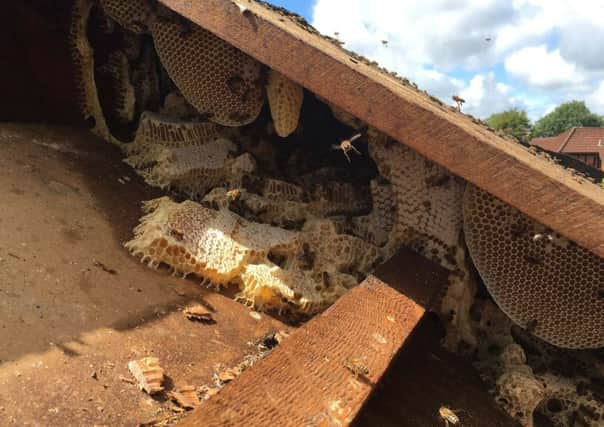Huge bee hive found as honey runs down hospital walls


More than 100,000 bees were discovered at Rookwood Hospital in Cardiff and specialist beekeepers from Burscough were called out to deal with them.
It is thought the bees may have been there for up to five years and were only noticed after warm weather melted their wax and honey dripped down from a roof.
Advertisement
Hide AdAdvertisement
Hide AdTeams from the Tree Bee Society in Burscough were called out to remove a large hive which was above the hospital’s elderly care assessment unit.
Abigaile Reade, from the not-for-profit company, said: “Honey coming through the walls and ceiling may sound like something of biblical proportions, but people walking past wouldn’t have noticed, the hive just kept growing.
“Hives are limited in their space, but as the hospital roof is so big, there wasn’t really a limit this time, which is why it has grown.
“If it was left even longer, it could have become astronomical.”
Advertisement
Hide AdAdvertisement
Hide AdThe group, set up in 2014, removed the 50,000-strong hive by cutting a hole in the roof to take it out before fixing it onto a frame and collecting the insects in a box.
However, a second hive was later discovered in a roof of another unit - prompting stunned beekepers to make a return visit to the hospital.